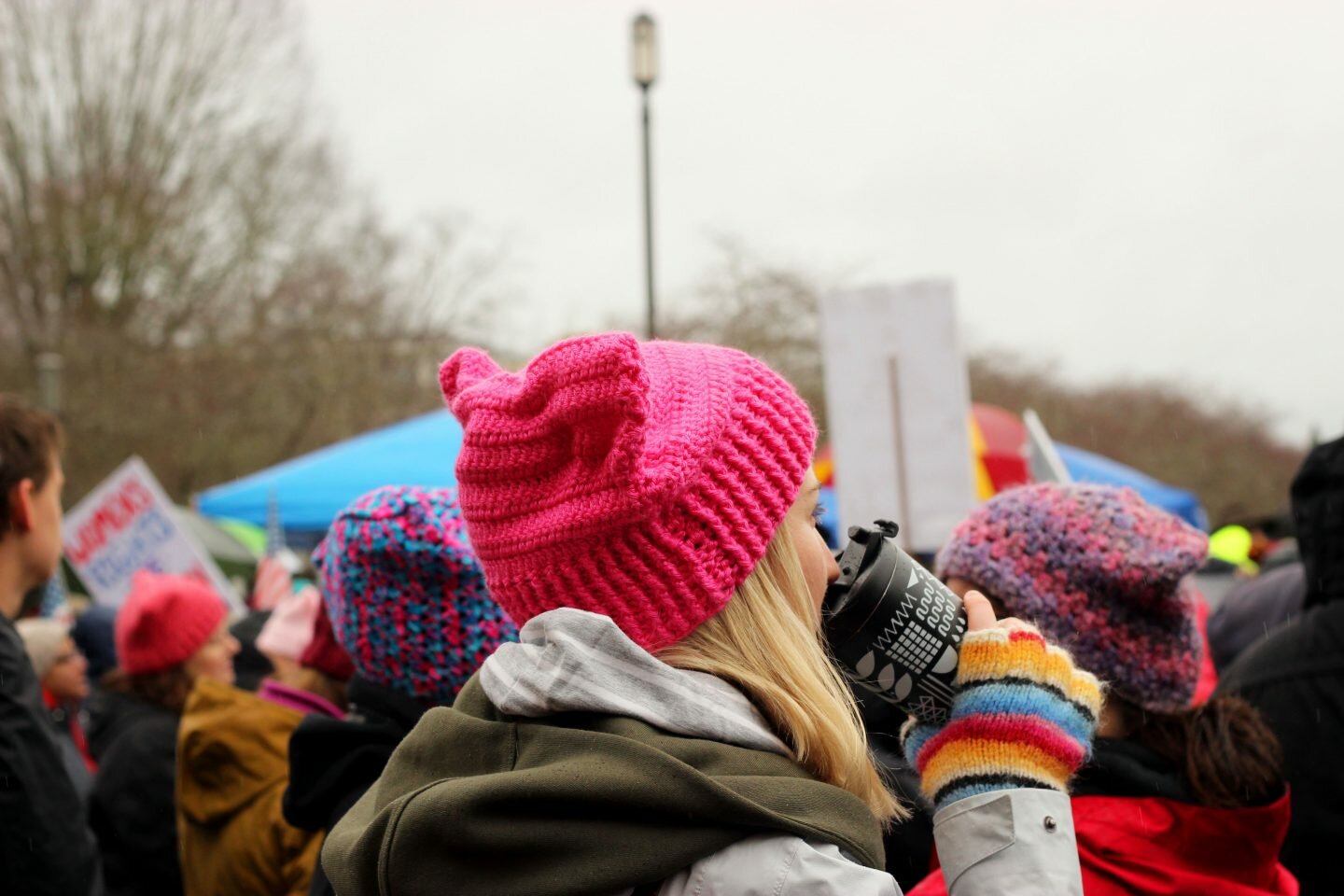Joe Biden and Harry Styles — depending on who’s asked, this unlikely duo are either the twin saviours of masculinity or its worst enemy.
Styles’ December cover look for American Vogue, which included a custom Gucci lace gown, was derided by Conservative press as an outright attack on “traditional” masculinity. Throughout the 2020 election trail, Biden’s masculinity was repeatedly challenged by right-wing America: A portrait of Biden kissing his son Hunter’s cheek was labeled deviant; the commentator Tomi Lahren went semi-viral for mocking Biden’s mask-wearing as effeminate and weak.
This bizarre feminisation of health guidelines may explain why Covid-19 disproportionately infects and kills American men, who are more likely than women to reject safety precautions for the sake of appearing fearless.
It’s not only the United States that confronts a masculinity crisis. In recent years, the ascendancy of Donald Trump, the UK’s Boris Johnson, the Philippines’ Rodrigo Duterte, and Brazil’s Jair Bolsonaro has left many sceptical of old-school political strongmen.
By contrast, several headlines highlight female world leaders’ success against Covid-19. Many note that their assured — not to be confused with perfect — leadership, rooted in historically feminine traits like empathy and collaboration, owes less to presumed “biologically innate” qualities than to political systems that emphasise equality.
As The Atlantic’s Helen Lewis puts it, “after centuries of dogma that men are naturally better suited to leadership, the opposite is not suddenly true. Women leaders aren’t the cause of better government. They are a symptom of it.”
Many cultures code personality traits “masculine” or “feminine” and connect them with being a man or woman, respectively. There’s increasing acceptance that these categories don’t always align. Nonbinary identities aside, men can embody femininity, women can embody masculinity, and most people embody combinations of both.
That’s not how macho strongmen think or behave. In the West, masculinity has long been associated with violent domination of the other, especially anything feminine or foreign. “Femininity, situated as the essential and binary opposite of masculinity, must be continually policed so masculinity remains impenetrable and unquestioned,” explains editor Marcie Bianco.
Therein lies the difference between, say, Jacinda Ardern and Donald Trump. Feminism’s progress expands women’s potential, arbitrary masculine/feminine labels be darned. The same can’t be said for men, for whom embracing femininity tends to remain a form of degradation.
For example, popular narratives of men masquerading as women (Tootsie, Mrs Doubtfire) often depict protagonists learning empathy through walking a mile in women’s shoes but are explicitly comedic; the actors’ feminisation is part of the — borderline misogynist and transphobic — gag.
In light of this, Harry Styles’ Gucci gown moment and Joe Biden’s embrace of — if not femininity outright — a softer masculinity should be hailed as groundbreaking, especially when safe-distancing-is-for-sissies masculinity is literally claiming lives.
The reality is a little more complex than that.
Much has been written about the derivative and secondary portrayal of femininity in the West. In the Judeo-Christian tradition, the first woman, Eve, was created from Adam’s rib to be his companion. Most early female cartoon characters (think Minnie Mouse and Daisy Duck) originated as carbon copies of their male counterparts, but with mascara and cuter outfits.
Femininity is constructed as lesser, existing only as a counterpart or accessory to masculinity. And we haven’t even unpacked the millennia-long stigma of feminised superficiality and artifice. Gender fluidity à la David Bowie or Prince has typically been provocative in intent. It did not seek to normalise men embodying the feminine. If anything, it maximised shock value and reinforced notions of femininity as skin-deep spectacle.
This cultural legacy has left many ambivalent over Harry Styles’ lightning-rod Vogue cover. Freelance writer Dejan Jotanovic notes that Styles “can fall back on his toned, tattooed, conventionally handsome masculinity at any moment… When will actual femininity — not just as a shiny vehicle for consumption or marketing but one woven directly into the fabric of everyday living — truly be in fashion for men?”
Gender activist Alok Vaid-Menon adds: “Am I happy to see Harry be celebrated for openly flouting gendered fashion norms? Yes. Do trans femmes of colour receive praise for doing the same thing every day? No. … Do I think that white men should be upheld as the face of gender neutral fashion? No.”
Vaid-Menon’s final observation bears acknowledgement: Our ideas of masculine power are also racialised. The transgressiveness of Biden and Styles’ perceived femininity owes much to whiteness, for it entails the greatest “loss” of both race and gender privilege.
This may account for Styles’ genderfluid fashion sense attracting disproportionate attention compared to nonwhite or LGBTQ+ peers such as Jaden Smith, Bad Bunny, and Billy Porter; or why nonwhite male supporting characters in modern action movies (a popular medium for defining masculinity) are given more license to play with fashion than bland, conservatively macho white leads; or why K-pop boy bands such as BTS’s counterintuitive beauty standards, which highlight the arbitrariness of our own, remain marginalised and under-examined.
The million-dollar question is this: How committed are privileged men like Joe Biden and Harry Styles to dismantling masculine supremacy?
The jury is still out on the former. For all of Biden’s soft credentials, he has repeatedly teased the press with the image of fisticuffs with opponents. On the election trail, journalist Monica Hesse wrote that “it’s not clear whether Joe Biden and Donald Trump actually want to beat each other up, but it’s abundantly clear they want you to know that they could.” Good ol’ Joe retains an investment, however minimal, in masculinity of the violent, domineering variety.
Styles, meanwhile, reassuringly responded to his storm in a teacup with an Instagram photo of himself in yet another frilly ensemble, unrepentantly enjoying a banana, captioned “bring back manly men”. Fingers crossed.
